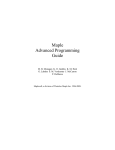Download Symbolic Mathematics System Evaluators
Transcript
Symbolic Mathematics System Evaluators
Richard J. Fateman
Computer Sciences Division
Electrical Engineering and Computer Sciences Department
University of California, Berkeley
USA
Abstract
\Evaluation" of expressions and programs in a computer algebra system is central to every system, but inevitably fails
to provide complete satisfaction. Here we explain the conicting requirements, describe some solutions from current
systems, and propose alternatives that might be preferable
sometimes. We give examples primarily from Axiom, Macsyma, Maple, Mathematica, with passing mention of a few
other systems.
1 Introduction
A key issue in the design of computer algebra systems (CAS)
is the resolution of what is meant by \evaluation" | of
expressions and programs in the embedded programming
language of the system.
Roughly speaking, evaluation is a mapping from an object (input) and a speci
ed context or environment to another object that is a simpler or more speci
c object (output). Example: 2 + 3 evaluates to 5. More speci
cally and
somewhat pedantically, in a CAS, evaluation involves the
conventional programming-language mapping of variables or
names (e.g. x) to their bound values (e.g. 3), and also the
mapping of operators (e.g. +) to their actions. Less conventionally, CAS evaluation generally requires resolution of
situations in which a variable \has no value" but stands only
for itself, or in which a variable has a value that is \an expression". For example, given a context where x is bound
to 3, y has no binding or is used as a \free variable", and
z is a + 2, a typical CAS would evaluate x + y + z + 1 to
y + a + 5.
In simple cases this model is intuitive for the user and
eciently implemented by a computer. But a system design must also handle cases that are not so simple or intuitive. CAS problem-solving sessions abound in cases where
the name and its value(s) in some context(s) must coexist.
Sometimes values are not the only relevant attributes of a
name: there may be a declaration of \type" or other2 auxiliary information. For example it might evaluate sin x 1
to \true" knowing only that x is of type Real. (If x were
known to be complex, this could be false.)
CAS builders, either by tradition or speci
c intent often
impose two criteria on their systems intended for use by a
\general" audience. Unfortunately, the two criteria tend to
conict.
1. The notation and semantics of the CAS should correspond closely to \common intuitive usage" in mathematics.
2. The notation and semantics of the CAS should be suitable for algorithmic programming, as well as (several
levels) of description of mathematical objects, ranging from the abstract to the relatively concrete data
representations of a computer system.
The need for this rst requirement (intuitiveness) is rarely
argued. If programs are going to be helpful to human users
in a mathematical context they must use an appropriate
common language. Unfortunately, a careful examination of
common usage shows the semantics and notion of mathematics as commonly written is often ambiguous or context
dependent. The lack of precision in such mathematics (or
alternatively, the dependence of the semantics of mathematical notation on context) is far more prevalent than one might
believe. While mathematics allegedly relies on rigor and formality, a formal \automaton" reading the mathematical literature would need to accumulate substantial context or else
suer greatly from the substantial abuse of notation that is,
for the most part, totally accepted and even unnoticed by
human readers. Consider cos(n + 1)x sin nx, as appears in a
well-known table of integrals (formula 1.351 8]). Try that
in your favorite CAS parser!
Because the process of evaluation must make explicit
the binding between notation and semantics, the design of
the evaluation program must consider these issues centrally.
Furthermore, evaluation typically is intertwined with \simpli
cation" of results. Here again there is no entirely satisfactory resolution in the symbolic computation programs or
literature as to what the \simplest" form of an expression
means.
As for the second requirement, the need for programming
and data description facilities follows from the simple fact
that computer algebra systems are usually "open-ended."
It is not possible to build-in a command to anticipate each
and every user requirement. Therefore, except for a few
simple (or very speci
c, application-oriented) systems, each
CAS provides a language for the user to program algorithms
and to convey more detailed speci
cations of operations of
commands. This language must provide a bridge for a computer algebra system user to deal with the notations
and
semantics of programming as well as mathematics1 . Often
this means including constructions which look like mathematics but have dierent meanings. Examples: x = x + 1
could be a programming language assignment statement, or
an apparently absurd assertion of equality. Furthermore,
the programming language must make distinctions between
forms of expressions when mathematicians normally do not
make such distinctions. As an example, the language must
deal with the apparently equal but not identical 2x and x + x.
Programming languages also may have notations of \storage locations" that do not correspond simply to mathematical notations. Changing the meaning (or value) of an expression by a side eect is possible in most systems, and
this is rather dicult to explain without recourse to notions like \indirection" and how data is stored. For example, Maple and Macsyma provide for assignment into the
compound data structure representing a matrix. An assignment may change not only the expression as expected, but
some other use of the structure. Using Macsyma syntax,
a:matrix(1]) b:a establishes both a and b as a 1 by 1
matrix with entry 1. Then b1,1]:0 changes the value of
a as well as b. Another somewhat related question is how
one would deal with evaluation in a matrix that is really a
spreadsheet of formulas and values1].
Traditional numerical programming languages do not have
to deal with the gradations of levels of representation in a
computer algebra system. In fact, the common programming term \function" for \subroutine returning a value" indicates the depth of mismatch between the mind-sets common in traditional programming and mathematics respectively. What sense does it make to ask if a Fortran \function" is \continuous"? At best, Fortran functions are maps
from discrete sets to discrete sets, and that alone makes
the concept of continuity inapplicable. Observe that any
(non-constant) \smooth" function ends up being discontinuous when you look closely. A system that can compute
the derivative of f (x) as (literally) something like df (x)=dx
must have a quite dierent set of notations and semantics in
dealing with \functions" from those of a Fortran compiler.
Furthermore, no computer algebra system today deals constructively with a statement beginning \Let C be the set of
continuous functions ...."
In more \complete" programming languages in which
symbols and values can coexist, additional issues arise. The
oldest higher-level language providing conundrums about
evaluation is Lisp, in which it makes sense to ask the question, when does (eval 'x) dier from x ?
In this paper we take most, but not all, of our examples from widely-distributed CAS: Macsyma, Mathematica
and Maple. AXIOM, a more recently released computer algebra system with a mathematical type system, introduces
another somewhat orthogonal perspective on evaluation, requiring the results to conform to a calculus of types. We
believe the options presented in these systems reasonably
cover the range of models that have been implemented in
other current computer algebra systems. There are also
programming languages which deal eectively with \sym1 Several systems use a dierent system implementation language
(C or Lisp, typically), where there is a clear distinction between mathematical expressions which are treated as data and programs. For
various reasons it is generally believed that these languages are less
intuitive to the mathematician, although their presence solves the
programmability issue decisively for persons willing and able to use
them!
bols" including most notably, Lisp. Space does not permit
discussing such programming languages generally.
With respect to its evaluation strategy, each existing system chooses its own perhaps twisting pathway, taking large
and small sometimes controversial stands on dierent issues,
along the way. It is an understandable temptation in design, to place enormous complexity in this one operation,
eval. After establishing or implying some context, virtually all problem-solving questions can then be reduced to
eval(solve(problem)).
As suggested above, we believe some design issues are
matters of opinion, and undoubtedly some of our criticisms
may irk designers who insist \I meant to do that" or \The
alternatives are worse." Yes, we do not always provide a constructive and consistent solution to the problems we point
out.
2 Context of Evaluation
In a typical CAS, an internal evaluation program (eval for
short), plays a key role in controlling the behavior of system.
Even though this program may not be explicitly available for
the user to call, it is implicit in much that goes on. Typically eval takes as input the representation of the user commands, program directives, and other \instructions" and
combines them with the \state" of the system to provide
a result, and sometimes a change in the \state." In other
words, eval stands between the input-parser and the operational routines for mathematical manipulation (programs
to factor polynomials, integrate rational expressions, etc.)
Some of the operational routines must themselves use eval
internally to achieve their objectives. For example, evaluation of a boolean expression will generally determine the
value of a conditional expression. Because of this kind of
dependence, changes to the evaluation process can aect
systems in many ways that do not seem to explicitly \call"
eval.
A more careful consideration of eval as one might expect
from a more formal programming language design looks a bit
dierent. Not being confused by the CAS attempt to intuit
the proper behavior of names, indeterminates, and values,
the scope and extent of variables can be more easily determined, and some choices made available to the programmer:
it should be possible to deal with contexts of binding in a
computationally consistent fashion. In a exible programming language, dierent bindings might co-exist within some
global framework.
For example, Common Lisp has the potential for any
number of distinct simultaneous bindings of a name, and
also for dierent scoping rules regarding those names. The
preferred form is lexical scope (but dynamic scope can be
used by choice). Its resolution of the result of eval, and
the discussion has, after a few decades, become rather wellformed. Consider our earlier example of what the value of
(eval 'x) should be in Lisp.
(let ((x 1))
<--- the first x is bound to 1
(let ((xPlusOne '(+ x 1)))
...
(let ((x 2)) another x
...
(eval xPlusOne))))
Is this supposed to return 2 or 3? By xPlusOne do we
mean \
nd the value of the innermost x and add one to it"
or do we mean \
nd the value of this x, the one that's right
there above xPlusOne, and add one to it? So far as intuitions go, it seems a valid intuition to think the programmer
meant \the rst x." Over the years the Lisp community
has considered dierent ways of making eval work and has
decided that some ways are better than others, and in the
better ways (eval
'x) is not necessarily equivalent to x as
an utterance2 .
3 Routes to Evaluation
There are several approaches to programming an evaluation
algorithm. We describe major variants in the subsections
below.
3.1 Eval, a procedure
The traditional procedural technique looks like the Lisp evaluation mechanism. The resemblance is not accidental. There
is a strong similarity between an algebraic expression represented as a tree (data), and a Lisp program to evaluate that
expression. For example, (+ x (* y z)) could be either.
This leads to evaluation that looks like induction:
If an expression is an indivisible \atomic" node such
as a number or a symbolic name, follow the rules for
evaluating atoms. Typically these include
{ numbers evaluate to themselves (in some cases
some type conversion may be done).
{ well-known constants like may (in certain circumstances) be changed to approximate numbers.
{ A symbol (variable, indeterminate) like x may be
replaced by its value, if it has one. If the value of x
is another symbol or a composite expression, some
evaluation schemes will evaluate that expression,
perhaps until it no longer changes.
If an expression is a composite object like F (a b c),
it has a \main operator" F . Some procedure associated with the name F , say fproc, will eventually be
executed, either on its raw arguments, or on the result
of evaluating its arguments. The typical case is that
rst eval will be applied to each of (a b c), and then
the fproc will be applied. We can think of this as
two steps: \evaluate the arguments of the main operator" followed by \apply the operator to the evaluated
arguments". There are many variations to this technique, but in general it involves recursively evaluating
subexpressions.
There is a rather substantial shortcoming in this model.
Mathematical semantics cannot always be modeled adequately
by this strictly bottom-up tree-traversal evaluation process.
Consider the command subs(x=a,x-x) by which we mean
to have the system substitute a for x when it appears in the
expression x - x. A bottom-up evaluation scheme would
evaluate x - x to 0 prior to performing the substitution,
and therefore the substitution would always result in 0. But
what if the computer system allows for such objects as 1
where 1 ; 1 is arguably dierent from 0? What if a were
an interval such as 0 1] in which case a - a is arguably the
non-zero interval ;1 1]. What if a = O(n), an asymptotic
2 In this paragraph I've taken some words from a note to
comp.lang.lispby [email protected] (J W Dalton) October 18,
1993
order? What if the object a does not even admit of a subtraction operation, since it could be, for example, such a
non-algebraic object as a \
le descriptor"?
3.2 A multi-phase model
An alternative approach is to change evaluation to a twophase operation. The rst phase, generally operating topdown, provides a context and perhaps an expected type for a
result, for every operation, and the second phase, operating
bottom up, computes values.
Consider the tree expression (in a lisp-like notation) of
(+ (modulo 5 3) (* 2 2)). The root node + has two descendants. In traversing the tree downward, the rst phase
of evaluation imposes the constraint that the types of its arguments must (at least) be objects that can be added. The
constraints imposed by modulo on its arguments as well as
its result types provide further context. Perhaps in this case
we intend that (modulo 5 3) return \-1 in the nite eld
Z3 ". Then note that the context of (modulo 5 3) aects
the constraint on (* 2 2), because we now presume that
the + is addition over a nite eld. Thus this rst phase is
not strictly one-pass if the expression had been (+ (* 2 2)
(modulo 5 3)), the new information passed upward to the
+ from the second argument would have to be transmitted
back to the rst argument. Indeed, one can envision an order
of evaluation to types where the result type of an expression
deeply nested in a tree can force re-evaluation of the whole
tree this re-evaluation may actually occur more than once
(and in a poorly constructed coercion system, might cycle
without convergence).
In the second phase, the relations between arguments
and results of each of the operators could be examined to
determine the actual computation to be performed. In some
cases this might still be ambiguous because the type of an
expression might depend on values to be computed. For
example, in the expression (if b 1 1.0), if the (presumably boolean) value for b is true, the result is a (presumed)
integer, but otherwise a (presumed) oating-point number.
Perhaps such expressions should be forbidden, or their results should be forcibly typed to the union of their possible
types. Later, it may be necessary to \retract" the type to
one of the constituents.
The AXIOM system has made a case that the rst phase
can be done on input in an interpretive mode, and that after
that point, every object has a type every operation has a
set of coercions for any n-tuple of argument types.
Although this is very helpful, it is painfully unclear, even
in some relatively simple cases, how the second phase should
coerce types when they do not match. We will return to this
in a later section.
3.3 Evaluation by Rules
Another technique, not particularly matched to the mathematical context of computer algebra systems, but nevertheless plausible because it can be used to de
ne general
algorithms on trees, is to de
ne transformations by rules.
These rules might direct transformations like
8x y log(x y) ! log(x) + log(y) x y > 0
or
( x if x 0
jxj ! ;x if x < 0
jxj otherwise.
Since even highly constrained and very simplistic rule
transformation systems (e.g. Post systems 4]) are equivalent to Turing machines in formal computational power,
they could be used, in principle, as the sole computational
description for any formal algorithm, not just evaluation.
Their advantage over the more traditional procedural definitions seems to be primarily in their declarative nature.
They may be simpler for a \user" of a complex system to
understand. An approach adopted by Theorist, a highlyinteractive commercial CAS, seems especially worthwhile:
it can be set up to present transformations from a list of
rules selected from a menu of rules. This seems much more
palatable than either writing rules from scratch or trying
to gure out how some system's \expand" command will
change an expression from the documentation, test cases,
and guesses. In brief: the rules also serve as documentation.
There are counterbalancing disadvantages to using rules:
1. It is possible to de
ne rules so that more than one
rule can apply. In fact, it is often dicult to write
a complex transformation without overlapping rules.
A simple conict resolution process such as \the most
recently de
ned rule takes precedence" may lead to
very slow execution|essentially all rules must be attempted to make sure that none can be applied. Also,
it might not provide the expected result. Another resolution such as \the most speci
c rule takes precedence"
can be dicult for the human \programmer" to understand or for the computer system to apply. (In fact this
meta-rule is non-computable, generally.)
2. Much of the software technology of modularity, functional programming, information-hiding, etc. is either
irrelevant or takes a rather dierent form in terms
of rules. It is rarely convenient to use a completely
declarative approach to specify a large computation.
Early evidence from the expert-system building community suggests that constructing large systems by
programming rules 2] may be even more dicult than
construction via traditional imperative programming.
3. The unit of speci
cation | rule application, is really a
two part process. It requires pattern matching (usually
a kind of graph-matching) in conjunction with checking of predicates on pattern-match variables. The second part is substitution and evaluation.
The matching process can be very costly, even if it
results in a failure to match. It may be important
to develop heuristics which avoiding the attempt to
match at all. Such attempts to \optimize" rule sets,
where information about partial matches are propagated can be critical to speed. There is a literature on
computing reductions related to rules (e.g. Grobner,
Knuth-Bendix 3]), which can be helpful in the domain of polynomial computer algebra evaluation problems have to do with computing in polynomial ideals|
reduction of systems modulo polynomial side-relations
in several variables. Unfortunately, success in a larger
domain does not follow from this same theory.
4. Matching trees where subtrees are unordered is inherently exponential in the depth of the trees. Expression or pattern trees with root nodes denoted \plus"
or \times" have unordered subtrees. If such commutative matching were an inherent part of the evaluation
process, this would not be a disadvantage of rules versus other mechanisms however, some costs in evaluation via commutative tree searches seem to be more an
artifact of the mechanism of rules than a requirement
for evaluation.
3.4 Object-oriented Evaluation
An object-oriented approach to evaluation provides another
perspective. Each object, an expression represented (abstractly at least) as a tree, has a root or lead operator.
This is associated with a program that \evaluates" objects
of that type. Thus one would have a \plus" evaluator, a
\times" evaluator, etc. An elaboration on this idea would
provide for inheritance of other information: The \plus"
evaluator might inherit routines that were associated with
the tree-nodes (objects being added) which might, for example, be members of the ring of integers, or power-series
in some variable. Objects with no evaluation functions (e.g.
a newly introduced f (x)), could also inherit some default
evaluation mechanism from the \mother of all evaluation
routines." Such a default routine might return f (y) where
y is the evaluated form of x.
An object-oriented programming approach is a handy
way to organize programs along orthogonal lines to correspond to helpful conventions from mathematics and data
structures.
4 Common Problems
4.1 Failure of the Top-Down Model
Each of the evaluation models generally boils down to a descent through an expression tree, reserving operations while
evaluating operands, and then backing out. Let us review
the results of a sequence of computations in evaluating the
expression f (g(x y) h(z )). Here the evaluator acts on f , g,
x, y, and then applies g to (the evaluation of) x and y. Then
h, and z , are visited and h is applied to (the evaluation of)
z . Finally f is applied to g(x y) and h(z ).
This sequence is sometimes wrong, because it assumes
that the evaluation of g(x y) is independent of (say) z . How
might this not be the case? As a somewhat frivolous example
mentioned earlier, consider (a + b) + c where a = 5, b =
6 and c = 2 mod 5. After adding a and b to get 11, we
then discover that arithmetic should have been performed
modulo 5. A less frivolous example along the same lines
would be one in which (say) a, b, and c are power series in
which arithmetic combining a and b must be redone in order
to combine the result with c. Yet another example (using
Mathematica syntax) is NIntegrate ...]] where the N
means \numerically". If we rst evaluate the argument, then
the symbolic integration will be attempted, rather than a
numerical quadrature.
Another consideration that is sometimes at the core of
performance improvements is whether \evaluation" and \simpli
cation" should be interleaved. This can be illustrated by
the famously inecient Fibonacci number recursion:
n
x < 2
f (x) ! 1f (x ; 1) + f (x ; 2) ifotherwise.
We can use the sequence f (4) ! f (3) + f (2) ! (f (2) +
f (1)) + f (2) ! (f (1) + f (0)) + f (1) + f (2) ! or f (4) !
f (3)+ f (2) ! (f (2)+ f (1))+ f (2)) ! simplify] ! 2f (2)+
f (1) ! The latter sequence of operations is much faster, since it
cuts down the exponential nature of the recursion (not that
it is ecient either.)
For systems which use many dierent data types or allow
parameters in the data types (an example of an implicit
parameter is the matrix dimension in a type \square matrix"
or the list of variables in a multivariate polynomial, or the
coecient domain for polynomials), some form of non-local
information may be required to determine a type for the
result.
In Macsyma, for example, converting an expression to
a polynomial form requires two stages. First is a lineartime scan so that all the symbol-names in the expression
are known (so that the \main"
variable and the others can
3
be presented in sorted
order
)
It
also notices some simple
relationships like z 2 being the square of z . The second
stage then combines the given expressions conceptually, in
the appropriately-constructed domain of rational functions
extended by the set of variables or kernels found.
If this conversion is not done initially by a two-pass algorithm, the evaluator may end up \backing and lling" rerepresenting sub-parts, and especially non-obvious kernels.
Another somewhat dierent problem that may not appear to depend on types or domains, but arguably does, has
been mentioned previously: The short-cut which replaces
with 0 any expression that looks like x ; x is not always
valid unless the domain of x is known. If x is a stand-in for
1, should the substitution be made? (Perhaps yes, arguing
that both 1 symbols are shorthands for a single variable.)
n
n
4.2 Quotation, Nouns and Inert Functions
In a computer algebra system it is useful at least on occasion to deal with temporarily \unevaluated" objects, even
though they might be evaluated in the current context to
yield something else. Consider typing a dierential equation
into a system. One might wish to type diff(y,t)=f(t).
But then if a \normal" imperative interpretation of diff
were applied, diff(y,t) might very well be evaluated to 0:
y does not apparently depend on t. As another example,
consider a program that uses, as intermediate expressions,
the symbolic roots of a quartic equation. This might happen
when a computer algebra system expresses the answer to certain classes of (elliptic) integrals involving rational functions
of square-roots of quartics. It makes much better sense (and
saves considerable time and space) to approach such problems by rst abbreviating the roots by making up names,
say fr1 r2 r3 r4 g, and then expressing the answer only in
terms of these roots. \Full evaluation" would ordinarily dictate that if you have an expression for r then you are compelled to eliminate r from expressions in which it occurs. In
the case of quartic roots, this is quite hazardous, since the
roots can each take a page to typeset, are pretty much guaranteed not to simplify much in isolation, and yet combine
with each other rather in neat ways that traditional simpli
cation routines will miss. Unless the roots are in fact quite
small (such as the case of all oating-point approximations
| not symbolic at all) or one can apply special simpli
ers
to collapse expressions involving subsets of fr1 r2 r3 r4 g, it
is probably best to leave the answer in terms of those roots.
Consider also the plotting of a function
f(x) := if (x>0) then x else -x.
If the command is plot(f(t),t,-10,10) or something similar, one must evaluate the rst argument just one level: from
f to its de
nition, but no further evaluation of the de
nition
is possible. If one foolishly answers the question \Is t > 0?"
with \no, t is just a symbol" then you have lost. One must
i
i
3 By contrast, Maple does not sort its variables. (They are \ordered" by the accidents of memory location).
defer even asking this question until the plot program repeatedly evaluates the expression for dierent values of t.
In Lisp, such issues are dealt with directly. There is a
\quote" operator (generally with the notation 'x meaning
\the unevaluated symbol x") to ward o the eect of the
general evaluator. In Macsyma, a similar notation for quoting operations is available so one can write a dierential
equation as 'diff(y,t)+f(t) = 0. For the quartic equation problem one could let s=solve(...) and then deal
with `s1] etc. without looking at the form of the solution.
A hazard here is that one does not want to see|displayed|
the quote-marks, suggesting the need for a slightly dierent
but more visually similar \noun" operator for diff. Maple
calls such operators \inert" and uses a rst-capital-letter
convention to distinguish them from the normal \verb" operators. The Maple convention is to identify such operators
with their lower-case versions only in a particular evaluation
context where such inert operators can be removed by a special evaluation scheme. For example, the normal evaluator
will remove (by evaluation) derivatives (the diff operation)
but will leave Diff unchanged. Using an inert integration
operation in an expression leaves the form untouched until
some subsequent evaluator (say one for numerical solution
of dierential equations) treats the inert operator in some
special way.
Although Macsyma has a mechanism for forcing its evaluator to convert a particular \noun" form to a \verb" form,
this is not quite analogous to Maple's behavior, which seems
to generally take the view that a global re-examination of
the expression is needed to remove inert operators. (In Lisp,
the function eval \undoes" the quote.) There are subtle issues as to how to resolve the bindings of symbols that are
contained in the previously-inert expression being evaluated.
Various careful de
nitions can be seen in the Common Lisp
and Scheme standards most computer algebra system documentation seems to ignore the issue in the hopes that the
user will not notice the vagueness at all.
An example of another inert function in Maple may help
clarify the concept. The operation Power is used in conjunction with the mod operator to provide \special evaluation" facilities: to compute i mod m where i is an integer it is undesirable to compute the powering rst over the
integers (possibly resulting in a very large integer) before
reduction modulo m. The expression Power(a, b) mod p
which may also be written as a&^b mod p is similar in form
but it constructs an expression \inertly" without evaluation,
and then afterward in the \mod p" context, computes the
power, avoiding integers larger than m. Another example
of an inert function is Int, short for integrate. This inert
function can be removed by numerical evaluation in evalf,
and its use is particularly time-saving when the user can
predict that symbolic integration will not result in a closed
form (and therefore should not even be attempted.) It may
of course result in wasting time when a symbolic result is
easy to compute and then evaluate numerically. Maple does
have a function value() to change a given inert form to an
active form, on request.
n
4.3 Confusing Arrays and Matrices
An array is a data structure for storing a collection of values
indexed by some set. The set is usually a range of integers,
pairs of integers, or n-tuples of integers. One might consider
the use of other index sets such as letters or colors. Although
it is convenient to have an ordered index set, it may not be
required. Operations on arrays include access and setting
of individual values occasionally accessing and setting of
sub-arrays (rows, columns, blocks) is provided. Sometimes
extension by a row or column (etc.) is possible.
Naively, a matrix appears to be simply a case of an array
with an index set of full rectangular or square dimensions.
(Along with most computer algebra systems we will ignore
the very important eciency considerations that accrue to
special forms of matrices: diagonal, block diagonal, triangular, sparse.)
However, the operations on matrices are quite dierent
from arrays. For matrices;of1 compatible sizes and entries,
one can;compute
A := B A. Issues of \where does one
store B 1 " don't occur. Nor does the user have to worry
about the storage of entries in A on the left messing up the
entries in A on the right. Copying over data is done automatically. In a classical numerical language, one would
probably have to allocate array space for one or two intermediate results.
Evaluation of a matrix is a problem: If one asks for A1 1
does one evaluate the expression to the entry, or does one
evaluate that entry? In a system that does \evaluate until
nothing more changes" this may not matter in a system that
evaluates \once" does the access to an element count as that
one evaluation? Is one allowed to change one element of a
matrix, or must one re-copy it with a changed entry? It may
make sense to forbid altering a matrix after it is created.
In Mathematica there seems to be the additional (usually
unexpected and ill-advised) possibility that the symbol A
may have rules associated with it requiring re-evaluation of
the whole matrix A when only one element is accessed.
Then there are issues of subscripted symbols. If nothing other than the name A of a matrix or array is given,
is reference to A3 3 an error (\uninitialized array element",
\potentially] out-of-range index for array") or simply the
unevaluated A3 3 ? Mathematica makes no distinction between a subscripted name and a function call (A3,3] or
Sinx]). They are both \patterns" subject to replacement
by rules and evaluation.
And sometimes it is important to deal with the name of
an array, even if its elements are explicitly known. So-called
implicit operations can;be
very useful, and it is valuable to
be able to simplify AA 1 to I knowing only that A is a nonsingular square matrix, and not referring to its elements at
all. Indeed, not even knowing its size.
5 Innite Evaluation, Fixed Points, Memo Functions
So-called in
nite or xed-point evaluation is attractive primarily because it is commonly confused with simpli
cation.
The requirement is to detect that any further application of
a simpli
cation program \won't matter" |that the expression or system has reached a stable state or a xed point,
and further attempts to simplify the expression will have no
eect. Thus if you were to re-evaluate in
nitely many times,
it would not change.
Let us de
ne simpli
cation for our purposes here as a
transformation of an explicit function f (x) in some parameter x or vector of parameters, to another explicit function
g(x) = simp(f (x)) such that for any valuation v given to x in
some agreed upon domain, f (v) = g(v) and moreover, g(x)
is by some measure less complex. For example f (x) = x ; x
and g(x) = 0 are a plausible pair: g has no occurrence of x
and hence might be considered simpler. This equivalence is
however false if the domain of valuation is that of interval
arithmetic: if v = ;1 1] then v ; v is the interval ;2 2],
not 0.
A very appealing and generally achievable attribute of
a good simpli
cation program is idempotence. That is,
simp(x)=simp(simp(x)) for all symbolic expressions x. It is
intuitively appealing because if something is \already simpli
ed" then it cannot \hurt" to try simplifying it again. Since
simpli
cation per se should not change the environment, it is
plausible that a valid simpli
cation routine applied repeatedly will not cycle among some set of equivalent expressions,
but settle on one, the \simplest". (This is not to say that all
equivalent expressions will be simpli
ed to the same expression. Though that would be desirable (a Church-Rosser 4]
simpli
er), for some classes of expressions, it just happens
to be undecidable.) Note that we could consider building
a valid simpli
er by de
ning a sub-simpli
cation procedure
which is applied repeatedly until no more changes are observed, and then this n-iterative process is the simp with the
idempotence property.
Some aspects of evaluation are almost indistinguishable
from simpli
cation, especially if the valuations v are chosen
from \expressions" in the same domain as f . Repeatedly
associating valuations v with their names x leads to problems. In
nite evaluation can work only if eval(eval(x)) =
eval(x).
Unfortunately, if the usual assignment statement x:=x+1
is treated in this manner, and the \value" is nominally the
right-hand side of the expression, there is no nite valid
interpretation.
But if nite evaluation must be used in that situation,
how is one to determine \how many times" to apply a rule
such as ax + bx ! (a + b)x? Consider 3x + 4x + 5x. Can
one application do the job of fully evaluating the result of
applying the rule?
There are actually arguments that it can. Application of
a rule, or more generally, rule sets, can be sequenced in a
number of established ways, although termination is dicult
(theoretically impossible in some cases) to determine. See
the Appendix on rule ordering for further discussion of this
point.
If an expression is always simpli
ed or evaluated to a
particular form, why not remember the input-output relationship and short-cut any attempt to repeat the calculation
by referring to the \oracular" evaluator? Indeed, one of
the principal eciency tricks made available to programmers in any of the systems is the notion of a \memo function". In Macsyma, so-called hash-arrays are used for this,
Mathematica has a comparable facility by means of its rulebased memory, and the Maple programmer inserts option
remember in a procedure de
nition to use this facility.
By using these facilities, any time a function is \called"
on a given set of arguments (in Macsyma or Maple it looks
more like an array reference), the set is looked up. If it is
a new set, the result is computed and then \remembered"
typically in a hash table with the argument set as an index. The second and subsequent times the result will be
remembered from the rst time, and simply recalled. This
can be a potentially enormous improvement, but it has the
unhappy consequence that if \impure functions" (that is,
procedures that have side-eects, or whose results depend
on global variables) are used, the remembered results may
be inappropriate. Thus access to a global variable in Maple
g:=proc(z) option remember z+glob end refers to the
global variable glob. If glob=1 then g(3) will be 4. Changing glob to 2 does not make g(3) be 5. It is \stuck" at
4.
Functions having histories are not necessarily restricted
to user-dened programs. Maple system programs are set up
with option remember, including factor, normal, simplify
and (at one time) evalf. Some subtle problems reported
as Maple bugs are caused by such memory. For example,
re-computing a function after setting the system Digits to
compute with increased numerical precision might appear to
have no aect: the earlier low-precision result may simply
be recalled from memory and new values not recomputed at
all.
The negative consequences of this are quite far-reaching
in all of the systems and can be most unfortunate: xing a
program may not repair an incorrect answer because of an
entry in the memory table of some function f, whose name
may not even been known to the programmer. Such memory
is cleared by Maple's forget(f), Mathematica's Clearf]
or Removef] or Macsyma's kill(f).
Users and novice programmers can easily misunderstand
what has happened, resulting in substantial debugging dif
culty. I suspect that experienced programmers fall prey
to this source of bugs as well, especially since they may be
more inclined to try to take advantage of the vast speedup
potential.
6 A Collection of Systems
6.1 AXIOM
Computing the \value of an expression e" in AXIOM 10]
resembles the notion of evaluation in Lisp, which is to say, it
is evaluation with respect to an environment. It also has an
additional component, which requires evaluation to a type.
Let us give several simple examples. Consider p = 3x +4,
a polynomial in Zx], the ring of polynomials in the indeterminate x over the ring of integers Z. What is p=3? Plausibly it is (3x + 4)=3, an element in the quotient eld Z(x),
namely a ratio of polynomials in Zx] (In AXIOM this is
type: Fraction Polynomial Integer). Alternatively and
perhaps just as plausibly, p=3 is x + 4=3, an element in the
ring Qx], namely a polynomial in the indeterminate x with
coecients in the eld of rational numbers, Q. This is AXIOM type: Polynomial Fraction Integer. Since there is
only one intuitive conventional notation for division covering both cases, one solution, and perhaps the wrong one for
future computation, will be chosen in any situation where
the result must be deduced from the symbols p, =, and 3.
Conversions are possible, but there are intellectual and computational costs in using the wrong form.
A slightly more complicated, but extremely common, design situation occurs when performing arithmetic in Z(x y)
in preparation for rational function integration. A computer algebra system would like to deal with the \correct"
form: if one is integrating with respect to x this is to coerce the expression to a ratio of polynomials n=d where n
and d are each in Q(y)x] and d is monic (has leading coecient 1). This is quite asymmetric with respect to order
of variables: integration with respect to y would require a
dierent form, and integration of d=n may look quite different from a simple interchange of numerator and denominator from n=d. As a simple instance of this, consider the
expression (1 + y)=(3 + 3xy). Integration of this expression with respect to x is particularly trivial if it is rst rewritten as (1=3) (1 + y)=y (1=(x + 1=y)) The integral is
then (1=3) (1 + y)=y log(x + 1=y)
AXIOM goes further than other widely available systems
in making the descriptions of such domains plausible. In attempting to provide the tools to the user to construct various
alternatives, it does not necessarily provide the best intuitive
setting. For example, embraced within the notion of polynomial in several variables are the categories of Polynomial,
Multivariate Polynomial, Distributed Multivariate Polynomial,
Sparse Multivariate Polynomial, Polynomial Ring and
others. These domains are not necessarily distinguishable
mathematically, but in terms of data handling convenience.
Their distinguishing eciency characteristics may not be
meaningful to a user who is mathematically sophisticated
but inexperienced in computer algebra. While it may be
comforting to some to have a solid algebraic basis for all
computations, the user without a matching algebra background may encounter diculties in formulating commands,
interpreting messages, or writing programs.
A subtlety that is present in all systems but perhaps
more explicit in AXIOM is that one must also make a distinction between the types of variables and the types of values. For example, one could assert that the variables n and
m can only assume integer values, in which case (+ n m) is
apparently an integer. But it is manifestly not an integer
as we have written it, and as long as n and m are indeterminates, the sum of the two is an expression tree, not an
integer.
Given that we have a model in AXIOM that provides
a kind of dual evaluation: evaluation of an expression to
a pair: (type, value), how does it work? It appears that
by converting the type, one achieves much of the pseudoevaluative transformations. Thus if we are given r := 1/3
(type: Fraction Integer) then the command r :: Float
results in 0.3333333... where the number of digits is set
by the digits function. Of course this is not an exact conversion of value|more than the type is altered.
The principal other kind of evaluation in AXIOM is simple:
Any occurrence of a name in an expression in a context
to be \evaluated" such as the right-hand-side of an assignment, or an application of a function, causes the current
binding of a name to be used in place of its name. That is p
:= 1/3 establishes a value for the current binding-place for
p. References to p in the ordinary course of events will provide 1/3. A single quote 'p prevents such evaluation. This
is essentially the Lisp model, except that the values used
may themselves have names, and these too are \evaluated"
potentially in
nitely.
There is one form of eval that \removes" all quotes|in
its sole argument. Another set of evaluation transformations
are based on substitution semantics: that is, they specify
the substitution of some value(s) for a symbol or name(s) in
an expression (where then name could be a variable or an
operator).
Perhaps confusingly, syntactically indistinguishable versions of eval include operations on symmetric polynomials,
permutation groups, and presumably anything an AXIOM
program or a user wishes, as long as they can be distinguished by the types of the arguments. The expression
evaluate(op) identi
es the attached function of the operator op. Attaching an %eval function f to an operator op
is done by evaluate(op,f). The Common Lisp convention
(setf (evaluate op) f) might be clearer way of indicating
this.
R.D. Jenks of the AXIOM group at IBM has kindly provided additional details.
A mapping from e to its value V (e) looks like this.
If e is a literal symbol, say x then V (e) depends on how
x's binding in the current context was assigned. If it was
a \:=" assignment (x :=a) where V (a) was y at the time,
then it is y. If it was a \==" binding, (x ==e), then V (x)
is V (e). If there was no assignment, then it is an object of
type Symbol, x.
If e is a compound expression, then it has an operator
and operands. It also has a context in which a type u is
expected for V (e). To evaluate e of the form f (a1 a )
in the compiled language,
1. Let A = V (a ) for 1 i n.
2. Check to see if there is a unique \signature" denoted
f : (B1 B ) ! B in the environment such that for
each i, 1 i n, A is a subtype of B and such that
B is a subtype of type u. If so, apply that operation
to produce the value of V (e)
The semantics of the interpreter dier from the compiled
code in that one replaces the notion of \is a subtype of" with
\can be coerced to" and in case more than one signature is
found, choose the one judged to be \of least cost".
Exceptions to the general scheme are needed for a few
special operators.
For example: When x is a variable, x := e assigns a
value (the equivalent in Lisp is (setq x e)) f(a) == e or
f == (a) +-> e de
nes a function approximately like (setq
f '(lambda(a) e)).
A detailed examination of evaluation in A , (the language underlying Axiom) is beyond the scope of this paper.
In some circumstances the run-time computation should be
unimpeded by considerations of type, but in others it can
involve a good deal of machinery. Functions, domains, and
categories are rst-class objects, and appropriate coercions
are sometimes required.
n
i
i
n
i
i
]
6.2 Macsyma
To a rst approximation, Macsyma evaluates everything
once, as in Lisp. Just as in Lisp, there are special forms
that don't evaluate all their \arguments" (assignment operators don't evaluate their left-hand operands) there is also
a form analogous to Lisp's eval (namely, ev) that evaluates
one extra time. And there is a quote operator (the pre
x
apostrophe) which one thinks of intuitively as a way to prevent an evaluation. Actually, the evaluation happens, it is
just that 'x evaluates to x.
Contrary to Lisp's convention, evaluating a symbol x
that has no value does not result in an error, but merely
returns the symbol x. It is as though the system gured
out that the user meant to type (or was too lazy to type)
'x when the evaluation of x would otherwise signal an error
of type \unbound variable". An attempt to apply an unde
ned function to arguments would ordinarily signal an error
of type \unde
ned function" but here merely constructs a
kind of quoted \call".
Experimentation with such language decisions is fairly
simple. In fact, one can easily provide a simple alternative
to the Lisp evaluator, written in Lisp, but using these rules.
Such a program is given in Appendix III. This model is appropriate for the \functional programming" approach where
the value of a function depends only on its arguments and
not on its context. More work might be needed to provide
a natural way of expressing contexts (via an environment
passed downward). Such an environment would be used
to distinguish between the evaluation of (^ 3 5000) and
(mod(^ 3 5000) 7). In the rst case, the ^ would mean
computing the 5000 power of 3 over the integers in the second, the powering algorithm should be a much faster \mod
7" version.
There is are option for \in
nite evaluation" in which case
an expression is evaluated until it ceases to change. This can
be done by a \command" INFEVAL or set up in an environment by using ev(...,infeval). A related procedure is
INFAPPLY, which takes a function and arguments.
Evaluation and Simpli
cation are two intertwined processes: Commands that are submitted to the system by
a user are rst evaluated | symbols' values are inserted
for their names, functions applied to arguments, etc. Next,
the simpli
cation program makes a pass over the answer, in
many cases rearranging the form, but not the \value".
The user can change the meaning of evaluation by supplying values for symbols, function de
nitions, and setting
some ags (for example, numer:true means that 1=2 becomes 0:5 and constants such as are given oating-point
values.
The user can change the meaning of simpli
cation by advising the system of rules via tellsimp and tellsimpafter
which intersperse (before or after the built-in procedure for
an operator) additional transformations. The process of applying rules will ordinarily require evaluation (and simpli
cation) of the right-hand-sides of rules. It is also possible to
declare a host of properties on operators that impose rules of
(for example) linearity to instruct the simpli
er that f (a + b)
should be written as f (a) + f (b) etc. It is also possible to
disable the simpli
er by simp:off which is useful when one
wishes to (presumably temporarily) compute with unsimpli
ed expressions. This0 can be useful in, for example, telling
the simpli
er that 0 is to be rewritten
as U rather than
signaling an error. This requires that 00 rst be left unsimpli
ed in the rule-entry process.
There are some commands which are executed during
evaluation which have as their eect an extra simpli
cation
of their argument. For example, ratsimp is such a command.
Often the user need not know whether it is the simpli
er
or the evaluator that changes sin(0) to 0. Advanced programming requirements sometimes lead the ambitious into
having to consider noun and verb forms of operators. The
noun idea appears in Maple as inert operators|placeholders
that however contain reminders of what they might mean if
converted to verbs. Integral and dierential equations typically use noun forms as such placeholders.
Macsyma has several dierent alternative evaluation (actually, simpli
cation) schemes for special classes of representation. There is a \contagious" polynomial or rational form
which can be initiated by forcing some component of an expression into this form: e.g. x:rat(x) will do so. In this
case rational functions (ratios of multivariate polynomials
over the integers in a particular recursive form) will be used
as a default structure. Similar contagion aects expressions
involving series and oating-point numbers.
6.3 Maple
Normal evaluation rules in Maple are \full evaluation for
global variables, and one-level evaluation for local variables
and parameters." That is, a Lisp-like one-level evaluation
is assumed to be most appropriate for programs, and an
\in
nite" evaluation|keep evaluating until a xed point
is reached|in the top-level interactive \user" environment.
Evaluation is accompanied by simpli
cation always, although
some special simpli
cations can be separately applied. There
are a number of functions that don't use the standard topdown model of evaluation, but must look at their arguments
unevaluated or evaluated in a speci
c order. These \functions" include eval, evalf, evaln, assigned.
In normal Maple usage, the user is unlikely to need to
use the eval function. There is a quote operation: 'x'
evaluates to x. Typically this is often used in a convention
whereby a function returns extra values by assignment to
quoted names. Thus match(..., 's') returns true or false.
In case match returns true, it assigns a value to s. Used
indiscriminately, this convention could lead to dreadful programs.
Maple's normal evaluation procedure can be explicitly
called from within a program, for \extra" evaluation as
eval(x). This provides in
nite evaluation as done at the top
level. An optional second argument provides for multiplelevel evaluations: eval(x,1), which is commonly used, means
evaluate variables that occur in x only to their immediate
values, and not to continue ad innitum. Because eval uses
its second (optional) argument to control how its rst argument is evaluated, the function eval is on the list of functions that do not evaluate their arguments.
Maple's attempt to aect simpli
cation by imposing (say)
linearity on a function is, in Maple V, mistakenly confused
with function de
nition. Declaring an operator to be linear
appears to replace any previous de
nition with one like this
(from Maple V r1 newer versions have somewhat dierent
results):
proc(a)
options remember
if type(a,constant) then a*'procname(1)'
elif type(a,`+`) then map(procname,a)
elif type(a,`*`) and type(op(1,a),constant) then
op(1,a)*procname(subsop(1 = 1,a))
else 'procname(a)'
fi
end
To say that a function is both linear4 and has other
properties or evaluation semantics, seems beyond the scope
of this \hack".
The Maple design becomes rather complicated, and seems
to suer from a surprising number of variations or alternatives to eval that have evolved. I suspect this has been
caused by the rigid discipline imposed on the system by
keeping its kernel code small and relatively unchanging over
time. Thus extra pieces have been grafted on from outside
the kernel, in not-necessarily-orthogonal ways.
Perhaps the most straightforward alternative to evaluation is subs or substitute, which is a syntactic operation|
subs(a=b,a) is b. The others include Eval, evalf, evalm,
evaln, evalhf, evalb, evala, evalc, evalr, evalgf 5 .
And other issues whose import were not apparent at the
design stage were inadvertently botched these omissions
sometimes become apparent only much later.
Indeed, at this time Maple does not support nested
lexical scoping. The situation may be best understood as follows \In a procedure body, each
variable mentioned is either a formal parameter
or local of that immediate procedure, or else it is
global to the entire Maple session." (Diane Hagglund, Maple Technical Support, sci.math.symbolic
March 31, 1994)]
4 Maple seems not to distinguish cases such as \linear wrt x" from
\linear wrt y".
5 M. Monagan concedes that some of the functions currently in
Maple should not be called eval functions, but these designations may
be merely historical. Some may be eliminated (evalgf for example).
In mail to the Maple user group (April 19, 1994), including an explanation on how to simulate lexical scoping
via substitution, unapply and quoting, M. Monagan adds,
\I hope to add nested scoping rules in Maple] soon because
I'm tired of explaining this to users { I think I am getting
close to 100 times!"
In spite of this plethora of programs, the ambitious programmer would not be able to take advantage of useful
\evaluation-like" feature of Maple without looking at programs with names not directly identi
ed as eval-something
by the designers. There is modpol(a,b,x,p) for evaluation
of a(x) overZpx]=(b(x)) and e mod m for evaluation of e
over the integers modulo m.
Many additional functions are contained in the complicated suite of facilities entered by using the convert command. Some of the conversions are data-type conversions
(say, from lists to sets), but others are form conversions
such as partially factoring a polynomial, which maintain
mathematical equivalence. Other uses defy simple modeling. The Maple command subsop(0=f,g(r,s)) substitutes
f for the 0th (operator) g in g(r,s) to return f(r,s). Similarly, convert(3,b],`*`) returns 3*b, but neither one of
these expressions has a 0th operator: The expression 3x is
encoded as a standard product and has no operator * at all.
The command convert(10,hex) gives the symbol A (which
may, of course, have a value associated with it.)
The on-line manual for Maple V release 1 lists the following pre-de
ned conversions:
`+`
confrac
equality
fraction
lessthan
metric
polar
RootOf
vector
`*`
decimal
exp
GAMMA
lessequal
mod2
polynom
series
D
degrees
expln
hex
list
multiset
radians
set
array
diff
expsincos
horner
listlist
name
radical
sincos
base
double
factorial
hostfile
ln
octal
rational
sqrfree
binary
eqnlist
float
hypergeom
matrix
parfrac
ratpoly
tan
The user is invited to make additional conversions known
to Maple.
Why are we making such a fuss about convert? It is just
that Maple is inconsistent with regard to what constitutes
conversion, evaluation, or just a command. Why is factor
a separate command, but square-free factoring a \conversion"?
Let us turn to those other eval relatives. What do they
compute? The Maple manual (on-line) provides descriptions
for each of them, which we quote or paraphase below.
The program evalf evaluates to oating-point numbers
those expressions which involve constants such as , e, ,
and functions such as exp, ln, sin, arctan, cosh, ;, erf. A
complete list of known constants and functions is provided.
The accuracy of the result is determined by the value of
the global variable Digits. By default the results will be
computed using 10-digit oating-point arithmetic, since the
initial value of Digits is 10. A user can change the value
of Digits to any positive integer. If a second parameter, n,
is present the result will be computed using n-digit oatingpoint arithmetic.
evalf has an interface for evaluating user-de
ned constants and functions. For example, if a constant K must
be evaluated by calling a procedure, then the user must de
ne a procedure called `evalf/constant/K`. Then calls to
evalf(K) will invoke `evalf/constant/K`().
If evalf is applied to an unevaluated de
nite integral
then numerical integration will be performed (when possible). This means that the Maple user can invoke numerical integration without rst attempting symbolic integration through the following subterfuge. First use the inert
form Int to express the problem, and then use evalf as in:
evalf(Int(f,x=a..b))
A similar function, evalhf is provided that computes
using hardware oating-point. Its limitation are generally
those of the double-precision arithmetic system on the host
computer. It will signal an error if any of the data cannot be
reduced to a oating-point number. In particular, a name
with no associated value will force an error.
evala evaluates in an algebraic number eld, and evalgf
evaluates in an algebraic extension of a nite eld. These
are related in that they each set up an environment in which
a number of speci
c commands take on dierent meanings.
For evala an algebraic number eld is speci
ed by the second argument. For evalgf a prime number is provided by
the second argument. If the second argument is not provided, say, as evala(Gcd(u,v)), then the GCD function is
performed in the smallest algebraic number eld possible.
The commands that take into account the algebraic eld
include
Content Divide Expand Factor Gcd
Gcdex Normal
Prem
Primpart Quo Rem Resultant Sprem Sqrfree
For other commands, the rst argument is returned unchanged, after rst checking for dependencies between the
RootOf's in the expression.
If a dependency is noticed between RootOf's during the
computation, then an error occurs, and the dependency is
indicated in the error message (this is accessible through the
variable lasterror.)
An additional argument can be speci
ed for Factor. This
is an algebraic number, or a set of algebraic numbers, which
are to be included in the eld over which the factorization
is to be done.
An example:
> evala(Factor(x^2-2), RootOf(_Z^2-2))
2
2
(x + RootOf(_Z - 2)) (x - RootOf(_Z - 2))
Note that the commands are not identical to those available outside the evala environment | they have initial capital letters and are so-called \inert" functions until they are
activated by being evaluated in an environment. Interestingly, evala(Factor(x^2-2, RootOf(_Z^2-2))) with parentheses moved, produces the same result. (Normally an alias
would be used to provide a name for the RootOf expression,
dramatically simplifying the appearance of the problem and
its answer.)
evalm evaluates an expression involving matrices. It performs any sums, products, or integer powers involving matrices, and will map functions onto matrices.
The manual notes that Maple may perform simpli
cations before passing the arguments to evalm, and these simpli
cations may not be valid for matrices. For example,
evalm(A^0) will return 1, not the identity matrix. One simple way out of this problem is to use a dierent operator, ^^
for matrix powers (Macsyma does this, and a later release
of Maple provides &^).
Unassigned names will be considered either symbolic matrices or scalars depending on their use in an expression.
This is probably a bad idea, and leads to strange extra notations that include &*(A,B,C) to multiply three matrices.
Among commercial computer algebra systems, it appears
that only AXIOM has a \clean" route out of this mess by
requiring that types be maintained throughout a computation. To alleviate the user from the painful chore of guring
out the types of expressions, the AXIOM interpreter heuristically infers types on input. Unfortunately, the type it infers and the type needed by the user in further steps may
not agree. The clean route may thus not lead to a solution
without more work.
Maple's evalb(x) forces, to the extent possible, evaluation of expressions involving relational operators to the
Boolean values true or false. If Maple is unable to reduce
the expression to one of these, it returns an unevaluated but
perhaps transformed expression. For example, a>b will become b-a<0. Since Boolean operators (and, or, not) evaluate their arguments with evalb, evalb(x). (not(a>b) is
thus not(b-a<0). Somewhat uncomfortably, if a nor b have
any values at the moment, if (a=b) then 1 else 2 fi returns 1 while if (a>b) then 1 else 2 fi produces Error,
cannot evaluate boolean.
The convention that if gives an error if x cannot be reduced to a Boolean value is only one possible convention
among many for the \unknown" branch of an if. Macsyma
and Mathematica make dierent provisions, with Macsyma
allowing a choice of carrying the unevaluated if along, or
signalling an error. See Appendix II on Conditional Expressions.
Maple's evalc forces evaluation over the complex numbers. It appears to provide several facilities intermixed. One
facility attempts to split an expression into real and imaginary components in order to nd a kind of canonical form
for expressions. A second facility merely informs the system
that additional numerical evaluation rules are available, such
as cos of complex numbers. (M. Monagan explains evalc as
complex expansion under the assumption that all symbols
are real-valued.) More recent versions of Maple have taken
some of evalc's capabilities and added them to evalf.
At rst sight the function evaln(x) seems quite strange
| it is used to create a symbol that can be assigned a value.
In the simplest case, it is the same as using single-quotes.
You can use this to take some data and concatenate pieces
together to \evaluate to a name". Although evaln has a
few bizarre features, the notion of creating and installing a
string in a system's symbol-table is handy.
The assignment operation in most languages implicitly
uses \evaluate to a name" on the left-hand side of the assignment. Consider the sequence i:=1, ti]:=3, ti]:=4.
The left-hand side of the expression ti]:=4 should be \evaluated" to the location for t1], not 3, and not ti]. Maple's
penchant for the use of side-eects for assigning values to
extra variables makes an explicit version of this operation
handy. Thus, divide(a,x+1,`q`) might test to see if x+1,
divides exactly into the polynomial denoted by a. If so, q is
assigned the quotient. In a loop, you might need a sequence
of names for the quotients: divide(ai],b,evaln(ti]))
where i is the index of a for loop.
The program Eval, quite confusingly from our perspective, is an inert operator used to represent an unevaluated
polynomial and points to be used for evaluation. Apparently
the (unstated) motivation is to make it faster to express results as residues in nite elds. Eval(x^100-y^100,{x=3,y=4})
just sits there unevaluated, but computing that value mod 11
returns 0.
Maple's evalr implements a kind of interval arithmetic,
here called \range arithmetic" to compute a con
dence interval for a calculation. An associated function shake produces a interval to be fed into such functions.
The implementation details of evalr can be found, as is
the case for much of Maple (everything but the kernel) by
looking at the de
nitions which can be extracted in source
code form from the running Maple system. In fact, the
evalr system cannot work too well for the reasons given
earlier: the Maple kernel assumes that two intervals with
the same endpoints are identical, and that their dierence
is exactly zero.
In the versions of Mathematica prior to 2.2, the same error occurred eventually the vagaries of the Interval structure were incorporated into the equivalent of the Mathematica kernel.
6.4 Mathematica
The underlying scheme for evaluation in Mathematica 12]
is based on the notion that when the user types in an expression the system should keep on applying rules to it (and
function evaluation means rule application in Mathematica),
until it stops changing.
The evaluation strategy in Mathematica, as is typical
with every computer algebra system, works well for easy
cases. For more advanced problems, Mathematica's evaluation tactics, intertwined with pattern matching and its notion of Packages is more elaborate than most. It is clear that
the evaluation strategy is incompletely described in the reference 12] furthermore it appears it is never fully described
in the Mathematica literature. Experimentation may be a
guide.
It appears that the usual block structure expected of an
Algol-like language is only partly simulated in Mathematica.
The usual notion of contexts for bindings, as one might see
in Pascal or C is actually simulated by another mechanism
of Packages. De
ning, setting or evaluating a simple symbol, say x, at the command level actually de
nes it in the
Global (top level) Package. Its evaluation returns its binding
Global`x. Evaluation of a symbol de
ned but uninitialized
in a Module, for example by Module{x}, ..x..], is actually the same as a symbol Global`x$12. That is, a lexical
context is implemented by mashing together names with sequentially generated numbers that are incremented at each
use. There is also a Block construction, a remnant from an
earlier attempt to implement block structure in Mathematica. The evaluation mechanism of \repeated evaluation until
no change" pretty much defeated the local-name mechanism
of Block: If the global value of x is 4, then Block{x},x]
evaluates to 4 (presumably in two stages: x evaluates to x
in the outer block, and then x evaluates to 4).
Names can be de
ned in dierent Packages, perhaps
nested, in which case inter-package visibility and remotenaming requires additional syntax of the form elaborate
compound form package1`subpackage`name.
Evaluating a function or operator is quite elaborate First,
the name of a function is evaluated \until no change" to
some symbol s. If s has a function de
nition, (or a re-writing
rule, actually) with an appropriate number of arguments,
those arguments are evaluated in turn, unless s has one of
the attributes HoldFirst, HoldRest, orHoldAll. These indicate that some or all of the arguments are not to be evaluated immediately. They are set by using SetAttribute, as
in the example below. Yet if a Held argument is evaluated
once, it is evaluated \until no change". Thus confusingly,
given
SetAttributefoo,HoldAll]
z=4
foox_]:=x
barx_]:=x
the two functions de
ned are indistinguishable:
barz] will return 4.
But
fooz] and
foox_]:=x++
barx_]:=x++
are dierent. fooz] returns 4 and sets z to 5. barz] is an
error: one cannot increment a number.
It is also possible to prevent an evaluation by the judicious use of Hold] and ReleaseHold] as well as Unevaluated]
and Evaluate]. Distinguishing between the semantics of
these pairs seems pointless, since they all appear to be inadequate attempts to mimic the mechanism \quote" in an
environment in which the \until no change" rule holds. It
may be that a study of macro-expansion in Common Lisp or
some other language in which these issues have been carefully designed and tested for a period of years, would provide
a model for some other components of the Mathematica semantics.
Returning to the task at hand, assume now that the symbol s is a function de
nition and we've found one (the rst in
some heuristic ordering) rule that can be applied to rewrite
the expression. If that fails, we try the next rule, etc. If
all rules fail, then the expression is returned as s with its
arguments.
To determine if some rule can be applied, we look at
the possible de
nition structure for a function f. Even in a
somewhat simpli
ed explanation, we must deal with at least
the following kinds of cases (we give prototypical examples):
1. fx_,y_]:= for the usual parameter binding of two
arguments.
2. fx_,y_]]:= or any other fg...]] for parameter destructuring.
3. fx_foo]:= for explicit self-descriptive manifest-type
checking.
4. fx_?NumberQ]:= for implicit type-checking by predicate satisfaction.
5. fx_,1]:= for special case arguments.
6. fa,1]:= memo function for a particular set of arguments.
7. fx__]:= exible patterns for one or more arguments.
8. fx___]:= for zero, one, or more arguments.
9. fx_]:=... , fx_]:=.. it is possible to have multiple
(even conicting) de
nitions.
10. g/:f...g...]...]:= which de
ne \uprules" that alter the meaning of f, but only if one of the arguments
of f has a Head that is g.
A brief explanation of the uprule is probably warranted:
This is a rule for rewriting f, but keyed to the evaluator
noticing that g is in the top level of arguments to f. This is
an optimization to prevent slowing down common operators
where f is say + or *. Cluttering these common operators
with rules (say, to deal with the sum and product of a userde
ned introduced function) would lead to ineciencies.
Using the xed-point philosophy throughout the system
(not just at command level as in Maple) requires Mathematica to eciently determine that when a rule is attempted,
that in fact no change has happened (because such a change
could trigger further rule application). Just as Maple falls
short in its use of \option remember", Mathematica also appears to hold on to outmoded values. Mathematica applies
some clever and apparently non-deterministic heuristics to
determine this no-change termination condition. Because it
is possible to change the global state of the system by rules
that fail as well as by rules that succeed, the heuristic can
easily be subverted. While we show, by deliberate means
below, how to do so, the casual user can avoid it by using
only simple rules where no side-eects on global state are
possible if the rule fails. (This may not be entirely obvious,
of course).
Here is a de
nition of a Mathematica function g:
i=0
gx_]:= x+i / i++ >x
The two allegedly equivalent expressions {g0],g0]}
and Tableg0],{2}] result in {g0], 2} and {g0], g0]}
respectively.
Furthermore, Mathematica can be easily fooled into thinking the system has changed some dependent structure and
thus will spend time re-evaluating things without eect.
For example, after setting an element of an array r, by
r1]]=r2]] the system must check that no rules are
newly-applicable to r. This depends on how many elements
there are in r. If r has length6 10 this takes 0.6 ms., but at
length 100,000, some 433 ms.
There are additional evaluation rules for numerical computation in which Accuracy and Precision are carried along
with each number. These are intended to automatically keep
track of numerical errors in computation, although their failure to do so is one problem noted by Fateman 6].
Some expressions that are supposed to be purely oatingpoint (real) are \compiled" for rapid evaluation. This is
useful for plotting, numerical quadrature, computing sound
waves, and solving dierential equations. The evaluation
of compiled functions provides another set of semantics different from the usual arithmetic. This seems to be in a
state of ux as versions change. In at least one version,
the temporary excursion of a real-valued function to use a
complex-valued intermediate result causes problems.
Evaluation of expressions involving certain other kinds
of expressions, among them real intervals, and series, also
seem to have special treatment in the Mathematica kernel. This must be handled rather gingerly. Consider that
Ox]^6-Ox]^6, a series expression, is not zero but is \equal"
to Ox]^6 and Interval{-1,1}]-Interval{-1,1}] is not
zero either, but Interval{-2, 2}].
6.5 REDUCE
The REDUCE system 11] uses a model of evaluation similar to that in Lisp, a language in which it has historically
been implemented, although a C-based version now exists.
REDUCE has two modes, The rst is called symbolic, and
consists of a syntactic variant of Lisp with access to the
REDUCE library of procedures and data structures. This
6 times
for version 2.2 on a Sparc-1+ workstation.
provides an implementation language level for the systembuilder and the advanced user. The second mode is called
algebraic, in which the user is expected to interact with the
system. Among other features, unbound variables can be
used as symbols, and unde
ned operators can be introduced.
In both modes there is a general in
x orientation of the
language, but the programming and expression semantics
are still generally based upon the Lisp model of recursively
traversing a tree representing a program, evaluating arguments and applying functions, but with resubstitution until
the expression being handled ceases to change. The simpli
cation process is a reduction to a nearly canonical form, and
subject to a certain number of ags (exp, gcd). A major
model for the use of REDUCE is for the user to supply a
number of rules that are de
ned via (let and match) statements, and then interact with user input. This has both
the advantages and disadvantages stated earlier concerning
rules.
The REDUCE system is admirably brief, at least if one
ignores the size of the underlying Lisp system, and avoids
some of the distressing aspects of more elaborate systems.
The trade-o is that the REDUCE notation is somewhat
more distant from mathematical notation, and some of the
advanced capabilities of the system are available only after
loading in modules from the substantial library.
6.6 Other systems
There are a number of new systems under development.
Space does not permit comparison here, but we expect that
to the non-expert, each appears to have an evaluation strategy similar to one or more described above.
7 Boundaries for Change
Various systems take dierent approaches in allowing the
user to alter the course of evaluation.
Within the bounds of what can be programmed by the
user, Maple provides some handle on the evaluation task:
the code for evaluation is in part accessible, and distributed
as properties of the operators. A similar argument can
be made for user-extended parts of Mathematica. That is,
one can specify rules for new user-introduced operators. In
Maple or Mathematica one has rather little chance to intervene in the proprietary kernel of the system. Since so much
more of the system in Mathematica is in the kernel, it makes
changes of a fundamental nature rather dicult.
Macsyma's user-level system has similar properties to
that in Mathematica, both with respect to adding and specifying new operators and changing existing ones. However
for nearly any version of Macsyma (and REDUCE), it is possible by means of re-de
ning programs using Lisp, to change
the system behavior. Although this is rarely recommended,
a well-versed programmer, aided by available source code,
has this route available. Such alternation is error-prone and
risky since a programmer may inadvertently violate some
assumptions in the system and cause previously working features to fail.
An example mentioned previously that causes problems
in any of these systems, the correct implementation of an
Interval data type, eectively cannot be done without kernel changes, since intervals violate the rule that x ; x = 0.
(According to interval rules, a b] ; a b] = a b]+;b ;a] =
a ; b b ; a].)
Axiom would simultaneously have less formal diculty,
and perhaps more practical diculty handling intervals. I
suspect that such an algebraic system that violates x ; x = 0
cannot inherit any useful properties of the algebraic hierarchy. Thus a new set of operators would have to be de
ned for
intervals, from + to cos to integrate. This has the advantage of a relatively clean approach, but on the practical side,
it means that many commands in the system that previously
have been de
ned over (say) reals, and might be useful for intervals will require explicit reprogramming. The general rule
that f (X ) for X an interval is min 2 f (x) max 2 f (x)]
cannot be used because it is not suciently constructive.
Plausible goals for any scheme that would modify an
evaluator are
1. It must leave intact the semantics and eciency of unrelated operators (including compilation of programs
involving them).
2. It must reserve natural notations.
3. It must display an economy of description.
4. It must, to the greatest extent possible, allow ecient
compilation of programs using the modi
ed evaluation.
x
X
x
X
8 Summary and Conclusions
From the view of studying programming languages, there
are many well-understood \evaluation" schemes based on a
formal model and/or an operational compiler or interpreter
and run-time system. Traditional languages in which the
distinction between data and program are immutable can
be described more simply than the languages of computer
algebra systems.
Among \symbolic" language systems where the data{
program dichotomy is less clear, Common Lisp is rather
carefully de
ned the semantics of computer algebra systems tends to be described informally, and the semantics
generally change from time to time.
Compromises in mathematical or notational consistency
are sometimes submerged in considerations of eciency in
representation or manipulation.
Is there a way through the morass? A proposal (eloquently championed some time ago by David R. Barton at
MIT and more recently at Berkeley) goes something
like
this: Write in Lisp or another suitable language7 and be
done with it! This solves the second criterion of our introductory section. As for the rst criterion of naturalness {
let the mathematician/user learn the language, and make
it explicit. If the notation is inadequately natural, perhaps
a package of \notational context" can be implemented for
that application area on top of the unambiguous notation
and semantics.
Providing a context for \all mathematics" without making that unambiguous underpinning explicit is a recipe that
ultimately leads to dissatisfaction for sophisticated users.
What makes a language suitable? We insist that it be
carefully de
ned. Common Lisp satis
es this criterion the
(much simpler) Scheme dialect of Lisp might do as well8 even a computer algebra systems language could work if it
7 Newspeak 7], Andante, were experimental languages developed
at the University of California at Berkeley for writing computer algebra systems based on an algebraic mathematical abstraction that
embodied most of what people have been trying to do. AXIOM's base
language is similar in many respects.
8 The usual criticism of Scheme is that it sacrices too much eciency for purity of concept.
were presented in terms of unambiguous, aesthetically appealing, and consistent speci
cations.
Among the more appealing aspects of Lisp and related
languages is that a clear distinction between x and (quote
x) which is also denoted by 'x. Evaluation is done by argument evaluation (one level), or by macro-substitution of
parameters, or by explicit calls to eval, apply or funcall.
The scope of variables, etc. are carefully speci
ed by Lisp.
Another appealing although complicating aspect of Common Lisp is the elaboration of name-spaces (via its package
concept). The relationships possible by importing, exporting, and shadowing names in a large collection of programs
from potentially dierent sources is a welcome relief from
systems in which arbitrary naming conventions must be imposed on programmers just to keep the cross-talk down to
a low level. Mathematica's package notion may have been
inspired by this development.
A minor variation to Lisp's evaluation { to avoid reporting certain error when a symbol is used unquoted, is used in
MuLisp, a dialect of Lisp that supports the CAS Derive 9].
Consider a version of Lisp that has a modi
ed eval that
is exactly like eval in almost all respects except that errors
caused by unbound variables or unde
ned functions result
in \quoted" structure. Such a version of Lisp can be written
as an interpreter in Lisp, or built within Common Lisp by
altering the evaluator. Such an alteration makes it dicult
to nd true programming errors, since there is a tendency
for erroneous input or programming errors to result in the
construction of huge expressions. This crude model of a
computer algebra system, among other consequences, allows
any result or any argument to be of the type \unknown
symbolic". It may be that a formalization and extension
of this interpreter can serve as a guide for variations on
evaluation.
An alternative view as to how one should construct of
large systems that has been promoted recently is that of
object-oriented programming. Indeed, writing certain computer algebra programs in Common Lisp's object system
(CLOS) is somewhat more convenient than otherwise. The
hierarchy of classes, coercions and de
nitions of methods
that are needed for writing computer algebra can to a large
extent be mirrored by CLOS. Work by R. Zippel 13] takes
this view. The demands of computer algebra seem, however, to strain the capabilities of less sophisticated systems.
In fact, Newspeak's multiple-generic functions 7] (where the
types of all the arguments, not just the rst) determine the
method to be9 used, were adopted by CLOS, and are particularly handy .
Variations on the symbolic-interpreter model for CAS
evaluation have dominated evaluation in the past it seems
that an object-oriented view may dominate thoughts about
systems for a bit more time perhaps a tasteful combination
of the two will emerge in the future.
We have come to believe that the role of a computer algebra system is to make available those underlying algorithms
from concrete applied mathematics, clearly speci
ed, that
might be useful to the experienced and demanding user of
symbolic scienti
c computing. Such an explicit recognition of the needs of the application programmer as
well as the system builder is key to providing facilities that will solve important problems. An application programmer (perhaps with the help of a system-
9 Simpler object-oriented systems where, in eect, the type of only
one argument is used for determining the meaning of an operation,
seem to defer but not eliminate painful programming.
building expert) has a chance of providing |in a particular domain|a natural, intuitive notation. These specialized
\mini-languages" may be clustered in libraries, or may be
stand-alone programs.
Perhaps if there is a lesson to be learned from the activity of the last few decades, it is this: For computer scientists
to provide at one fell swoop a natural notation and evaluation scheme for all mathematicians and mathematics is both
overly ambitious and unnecessary.
9 Acknowledgments
Thanks to R. D. Jenks, Keith O. Geddes, and M. Monagan,
and Jerey Golden for comments on evaluation in AXIOM,
Maple, and Macsyma. This work was supported in part
by NSF Infrastructure Grant number CDA-8722788 and by
NSF Grant number CCR-9214963.
References
1] Abdali, S. K., Cherry, G. W., and Soiffer, N.
Spreadsheet computations in computer algebra. ACM
SIGSAM Bulletin 26, 2 (Apr. 1992), 10{18.
2] Brownston, L., Farrell, R., Kant, E., and Martin, N. Programming Expert Systems in OPS5: An
Introduction to Rule-Based Programming. AddisonWesley, 1985.
3] Buchberger, B., Collins, G., Loos, R., and Albrecht, R., Eds. Computer Algebra: Symbolic and
Algebraic Computation. Springer Verlag, 1983.
4] Davis, M. Computability and Unsolvability. McGrawHill, 1958.
5] Fateman, R. J. Macsyma's general simpli
er: Philosophy and operation. Proc. 1979 Macsyma Users Conference, Washington, D.C. (1979), 336|343.
6] Fateman, R. J. A review of Mathematica. J. Symbolic
Comp. 13, 5 (May 1992), 545|579.
7] Foderaro, J. K. The Design of a Language for Algebraic Computation Systems. PhD thesis, Univ. of Calif.
at Berkeley, 1983.
8] Gradshteyn, I. S., and M.Ryzhik, I. Table of Integrals, Series, and Products, 4th ed. Academic Press,
1980.
9] Soft Warehouse Inc. DERIVE User Manual version
2. Soft Warehouse, Inc, Honolulu, Hawaii, 1992.
10] Jenks, R. D., and Sutor, R. S. AXIOM: the Scientic Computation System. NAG and Springer Verlag,
NY, 1992.
11] MacCallum, M. A. H., and Wright, F. Algebraic
Computing with REDUCE. Oxford University Press,
1991.
12] Wolfram, S. Mathematica: A System for Doing
Mathematics by Computer, 2nd ed. Addison Wesley,
1991.
13] Zippel, R. The Weyl computer algebra substrate.
Tech. Rep. 90-1077, Dep't of Computer Science Cornell Univ., 1990.
Appendix I: Rule Ordering
There are many options to rule ordering, and a transformation may be successful with one order but lead to \in
nite
recursion" with another.
The exact nature of pattern matching and replacement
need not be speci
ed in the discussion below. Conventionally, patterns and their replacements would have zero or
more \pattern variables" in them, and there might be associated predicates on these variables.
Given rules r := p ! e , i = 1 n where p and e
are in general tree descriptions, apply the (ordered) set of
rules fr g to a tree E .
Scheme 1: Starting with i = 1 apply rule r exhaustively
by trying it at each node of the tree E , explored in some
xed order (let us assume pre
x, although other choices are
possible). If the rule r applies, (namely, an occurrence of
p is discovered), then replace it with e . Continue to the
next subtree in the transformed E . When the initial tree is
fully explored, then proceed to the next rule (i := i +1) and
repeat until all rules are done.
Scheme 1a: Halt at this time.
Scheme 1b: Start again with i = 1 with the transformed
tree E and repeat again until a complete traversal by all
rules makes no changes.
Scheme 1c: In case the tree keeps changing, repeat only
until some maximum number of iterations is exceeded.
Variants to scheme 1a. When a rule r succeeds at a
given position, immediately attempt to apply rules r for
k > j or k j to its replacement.
Scheme 2: Starting with the root of the tree E (or using
some other xed ordering), and starting with the rst rule
(i = 1) try each rule r at the initial node. If they all fail,
continue to explore the tree in order. If some rule r applies,
then replace that node p by e . Then continue to the next
subtree in the transformed E until it is fully explored.
Scheme 2a: Halt at this time.
Scheme 2b: Starting with the root of the tree E repeat
until there are no changes.
Scheme 2c: Repeat until some maximum number of iterations is exceeded. Variants to scheme 2a: When a rule r
succeeds at a given position, immediately attempt to apply
rules r for k > j or k j to its replacement.
Heuristics: Some rules \shadow" others. Re-order the
rules to favor the speci
c over the general. Use partial
matching (or failure) of one pattern to deduce partial matching (or failure) of a similar pattern (e.g. commutative pattern matching can have repetitive sub-matches.)
i
i
i
i
i
i
i
i
i
i
j
k
i
j
j
j
j
k
In any of these schemes there is typically an implicit
assumption that the testing of the rules' patterns is deterministic and free of tests on global variables, and thus once
a pattern fails to match it will not later succeed on the
same subexpression. In some systems the replacement \expressions" are arbitrary programs that could even rede
ning
the ruleset).
Several application schemes were implemented in Macsyma, using dierent sequencing in the expression and through
the rules. If only one rule is used (a common situation) several of the variations are equivalent. Mathematica has two
basic variants of scheme 1, ReplaceAll and ReplaceRepeatedly,
which in combination with mapping functions and a basic
Replace provide additional facilities. In fact, elaborate rule
schemes are rarely used for several reasons. The patternspeci
cation language and the manner of matching is already dicult to understand and control, and somewhat
separated from the major thrust of the language. Rules that
do not converge under essentially any sequence are particularly dicult to understand. Especially for the naive user, it
is more appealing to attach rules in Macsyma to the simpli
er 5], or in the equivalent Mathematica form, to particular
operators, than to use them in a free-standing rule-set mode.
Appendix II: Conditional Expressions
Consider the construction \if f (x) then a(x) else b(x)." As a
traditional programming language construct it is clear that
f (x) should evaluate to a Boolean value true or false, and
then the evaluation of either a(x) or b(x) must provide the
result. It is quite important that only (and exactly) one
of them is evaluated, for the purposes of reasoning about
programs. If the evaluation of f (x) provokes some error
then the locus of control is directed elsewhere.
Let us assume now that these cases do not hold. We
must come up with a possible CAS alternative for the case:
f (x) evaluates to g, a variable or (in general) an expression
which is not known to be true or false.
1. We could insist in this case that anything non-false is
true, and evaluate the a(x) branch.
2. We could insist that this is an error and signal it as
such.
3. We could defer the testing until such time as it could
be determined to be true or false (the example below
is somewhat hacked together to simplify the concept
of scope here):
x:=3
r:= if (x>y) then g(x) else h(y)
could result in
deferred_if (3>y) then
eval(substitute(x=3, g(x))) else eval(h(y))
If r is later re-evaluated, say with
y:=2
eval(r) --> g(3)
y:=4
eval(r) --> h(4)
evaluated
evaluated.
4. We could defer the testing but be less careful with
the scope of variables, as is apparently done by Maple
(Vr2)'s if construct: the scope of all variables in the
deferred evaluation is taken to be that of the dynamic
scope, so the meaning of the x in the Boolean expression (x > y) could be dierent from the x in the
g(x)then clause.
Macsyma allows the speci
cation of several dierent options here, depending upon the setting of prederror. It
also has a a program that may stop and ask the user for an
opinion on logical expressions if it can't deduce the value.
Mathematica has a version of the If with an extra branch,
for \can't tell" although perhaps it should have yet another
for \evaluation of the boolean expression caused an error".

















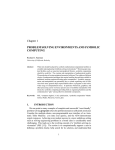
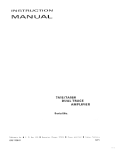


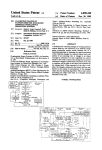
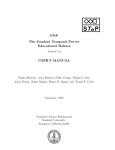

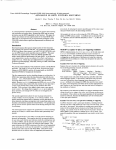

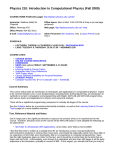
![Final Report - [Almost] Daily Photos](http://vs1.manualzilla.com/store/data/005658230_1-ad9be13b69bd4f2e15f58148160b0f22-150x150.png)

